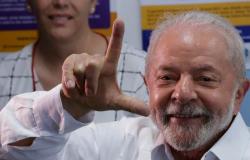(Bloomberg) — Shares of Tesla Inc. rebounded after Elon Musk pledged to introduce cheaper vehicles later this year, easing concerns about disappointing earnings results and poorer growth prospects.
The automaker said Tuesday it is accelerating production of new models using aspects of a next-generation platform that was slated for production in the second half of next year. The vehicles will be built on the same production lines as Tesla’s current lineup and will be ready in early 2025, if not before the end of the year, the CEO said.
The change in plans sent Tesla shares soaring in after-market trading the day before, overshadowing the drop in vehicle sales, worse-than-expected revenue and profits, and the burn of more than $2.5 billion in cash in a single quarter. Musk scared investors in the weeks leading up to the report, signaling that autonomous vehicles took priority over putting a $25,000 car on the market.
Free Ebook
How to analyze stocks
Sign up and receive an ebook that explains what every investor needs to know to carry out their own analysis
“What matters is that investors have some hope that growth will accelerate again next year,” said Gene Munster, managing partner at Deepwater Asset Management. “For the believers, he has given them enough to continue on the more positive path.”
Tesla shares closed with gains of 12.06% this Wednesday in New York, after recording gains before the start of regular trading. The stock has been the worst performer in the S&P 500 index this year, plunging 42% through Tuesday’s close.
Read more: Elon Musk confirms that Tesla will bring forward production of cheaper vehicles
In a conference call with analysts, Musk criticized automakers that reduced electric vehicle production plans and opted for more gasoline hybrids. While he didn’t name any manufacturers, General Motors Co. and Ford Motor Co. are among the manufacturers that have made this adjustment in recent months.
“The adoption rate of electric vehicles around the world is under pressure and many other car manufacturers are pulling back on electric vehicles and opting for plug-in hybrids,” he said. “This is not the right strategy.”
Tesla’s own strategy has been confusing lately. The company spent more than a year reducing prices across the board in an effort to increase sales. Instead, growth in vehicle deliveries slowed last year, then gave way to a surprising 8.5% drop in the first quarter, when the company assembled 46,561 more cars than it sold.
Investors were wary this month over reports that Musk abandoned a $25,000 model in favor of his high-risk pursuit of fully autonomous cars. The CEO hesitated when asked during the conference call whether a vehicle in this price range is still in the plans, saying only that there will be more to share when Tesla shows off a dedicated robotaxi in August.
Bloomberg reported earlier this week that a next-generation vehicle project has turned into an effort to extract cost savings from components and production methods and then apply those innovations to cheaper versions of the Model Y and Model 3 , the company’s two most popular electric vehicles.
Musk said Tuesday that the new vehicles Tesla is developing “will use aspects of the next-generation platform, as well as aspects of our current platforms, and could be produced on the same manufacturing lines as our current vehicle lineup.”
The new plan does not rely on any new factories or production lines and should eventually allow Tesla to reach more than 3 million vehicles of production capacity, Musk said. The company stated in its earnings presentation that its current installed capacity is over 2.35 million.
Tesla will continue working on a new “unbundled” module-based manufacturing process for the robo-taxi that Musk flagged earlier this month. The CEO referred to it on the conference call as Cybercab.
Although Tesla remains the dominant electric vehicle manufacturer in the US market, its financial performance has plummeted for several quarters. Adjusted earnings per share fell to $0.45 in the first three months of the year, below Wall Street’s expectation of $0.52 per share. Revenue fell nearly 9% to $21.3 billion, roughly in line with its first year-over-year drop in deliveries since 2020. That also fell short of the $22.3 billion expected by analysts.
Tesla’s vehicle inventory has increased to 28 days, nearly double the 15 days at the end of last quarter. “We expect the inventory build to reverse in the second quarter and free cash flow to return to positive territory,” Chief Financial Officer Vaibhav Taneja told investors on the conference call.
The Austin-based electric vehicle maker maintained its view that growth in vehicle deliveries could be “notably lower” than last year.
Tesla began its biggest round of layoffs last week, announcing plans for a more than 10% cut in headcount. Bloomberg reported that Musk pushed for a 20% reduction. Two senior executives announced their departures amid the restructuring. Another prominent manager, Tesla’s head of investor relations Martin Viecha, said during Tuesday’s conference call that he would leave the company.
© 2024 Bloomberg L.P.






